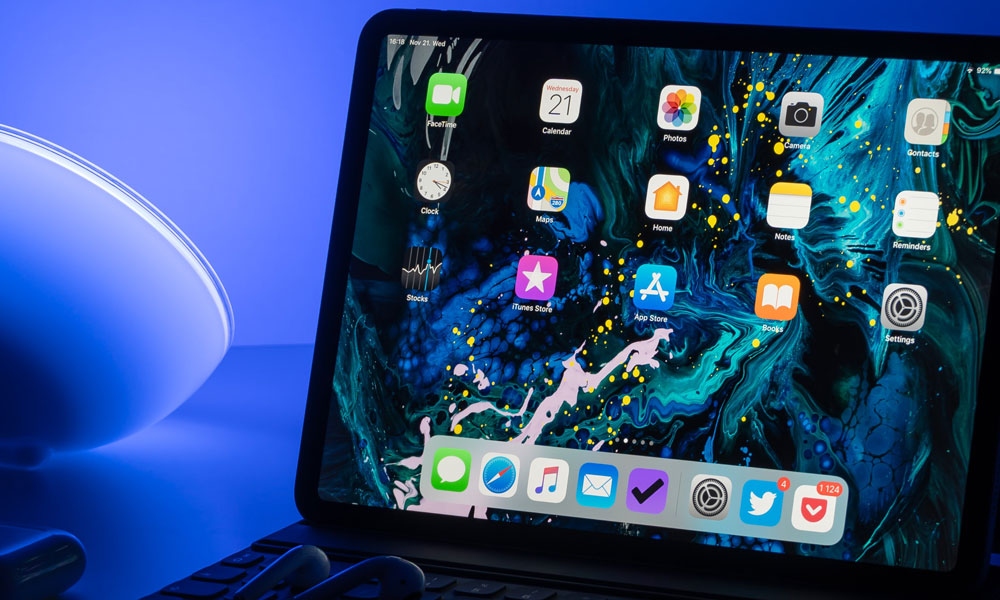This Year’s M5 iPad Pro Might Get Two Front Cameras
 Apple
Apple
Toggle Dark Mode
It’s starting to look like Apple may once again introduce its next-generation silicon on the iPad Pro before the Mac. Earlier this month, we saw a report suggesting that the M5 MacBook Pro lineup may not arrive until early 2026; however, an M5 iPad Pro is still expected to be released in the fall.
That would make last year’s debut of the M4 chip in a new, impossibly thin iPad Pro the start of a trend rather than a one-off occurrence. Apple surprised us when it skipped the M3 chip for that model in May 2024, five months before the chip was expected to arrive on any of its Macs.
At the time, many believed it was because the M3 was something of an oddball, as it utilized a preliminary “N3B” fabrication process that delivered very poor yields. However, it now appears that Apple may want the iPad Pro to lead the way into each new family of M-series chips. Of course, Apple may have other reasons for delaying its MacBooks, and two years aren’t necessarily enough to prove that this will become the norm.
However, this year’s iPad Pro may have more going for it than merely Apple’s leading-edge M5 chip. According to Bloomberg’s Mark Gurman, Apple has another twist in store for its premium tablet: a second front-facing camera.
The rationale for this isn’t anything particularly clever or exciting. This extra camera won’t be designed to power any creative selfie experiences or any other high-tech solutions. Instead, Apple is being inspired by an entirely practical consideration: the ability to use the iPad in any orientation.
The plan is to return to the traditional portrait-side camera without sacrificing the one on the long edge for use in landscape mode. In other words, give iPad Pro users the best of both worlds.
For over a decade, the iPad has consistently placed the front-facing camera on the short edge, aligning it in the same orientation as an iPhone. Even as more folks began attaching keyboards and using the iPad as a laptop replacement, Apple stubbornly refused to move it to the more logical landscape position. This created awkward situations during Zoom and FaceTime calls, where iPad users often seemed to be looking off to the side rather than directly at the other participants.
Apple finally relented in 2022 with a redesigned entry-level iPad that moved the front camera to the landscape position. For over a year, Apple’s most affordable iPad was the odd one out, but that’s partly because Apple went for an unprecedented 18 months between iPad releases. A new M2 iPad Pro was released in late 2022, retaining the original position, but it was also a modest refresh from its year-old M1 predecessor. When the next iPad Air and iPad Pro models finally arrived in early 2024, they made the same switch. Today, only the iPad mini still has the camera on the short side, but that seems perfectly reasonable for a smaller tablet that’s not designed to be used with a keyboard.
The camera placement was the final bold move in a series of changes that made it clear Apple was finally acknowledging how many iPad users live in landscape mode. The first concession came in 2020, when iOS 14.5 updated the boot screen so that the Apple logo no longer appeared sideways when starting up the iPad with a Magic Keyboard attached.
While the camera placement was a welcome change for iPad keyboard warriors, not everyone has been thrilled with it. “Fans of portrait mode suddenly found it harder to unlock the device and use the front camera,” Gurman notes. However, rather than revert to the original design, Apple has decided to compromise and add a second front-facing camera on the short edge for use in portrait mode.
It’s unclear if Apple plans to use the same cameras on both edges or how users will interact with them. Most likely, the proper camera will be selected automatically based on how the user is holding the iPad. As Gurman points out, this also mirrors the reports we’ve seen over the years about Apple’s early iPad prototypes, which had Dock Connectors on both the long and short edges, allowing users to dock them in either orientation.
However, Steve Jobs wasn’t a fan of that approach and nixed the idea. Jobs undoubtedly felt that was an inelegant design, which isn’t too surprising considering he wanted the first iPhone to be on Verizon to eliminate the SIM slot, telling designers and engineers that “we don’t need another hole” in it. It makes us wonder what Apple’s mercurial co-founder would think of two cameras, even if they are mostly hidden behind the black bezels.
[The information provided in this article has NOT been confirmed by Apple and may be speculation. Provided details may not be factual. Take all rumors, tech or otherwise, with a grain of salt.]









